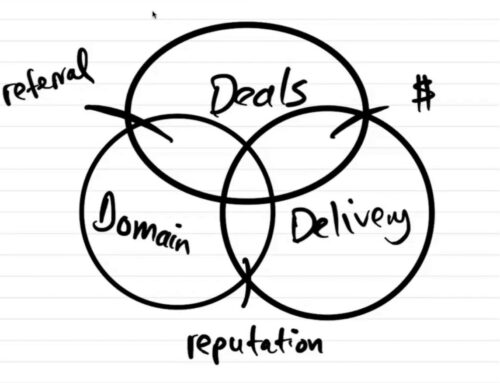What Exactly is a Technology Vision?
A technology vision is a statement that clearly describes what the future state of a company’s technology will be and why. It is a guiding light to current and future engineers that brings with it an assurance that the technology leaders of a company are governed by something greater than themselves.
The technology vision and strategy is in service to the greater vision of a company. It sets a longer term course for building resilience and strength into the engineering teams that will build the technology that helps achieve the company’s objectives.
Why a Technology Vision is Important
Just like a company vision is meant to keep everyone focused on the longer term goals when business gets messy, the technology vision keeps engineering teams glued to a set of principles during tumultuous times.
Technology planning needs to be flexible when business demands adjustments, but it can have a detrimental effect on engineering teams especially when leaders appear to be advocates of scope creep or deadlines. A vision for the engineering team keeps everyone anchored so that even when leaders struggle, they can lift their heads up to a common purpose.
Having a technology vision demystifies the future for employees and hopefully inspires them to be their utmost creative selves.
Creating the Technology Vision and Strategy
Where to start:
Creating a technology vision starts with a discussion. It is not quick and it is not easy. This is a good thing. It requires the coming together of great minds, old and young, fresh and dormant. You might find that you have to wake some of your key people from a deep sleep so that they are willing to commit mindshare to this process.
You may also find that some of your key people resist building a technology vision when the company vision would suffice. Take heart that this is also a good thing. Work with them. Enter into multiple dialogues about principles and values.
As you consider your technology vision, also take a look at Simon Sinek’s 3 things that make a meaningful vision. In this talk he reframes a vision as a Just Cause. Something that will inspire people to keep going when things get tough. He states that the Just Cause needs to be resilient, inclusive and service oriented.
Let’s get to work and create a technology vision by working through the 7CTOs P6 process. Afterwards we’ll take it for a spin through a few examples.
1. Principles
Write a list of 5-7 principles that govern your technology team.
What principles do you want to hold dear for everyone in the technology departments? We have an easy starting point since you would be hard pressed to find anyone that disagrees with the Agile Manifesto. Most people seem to be able to quote the 4 main values, but not that many know about the 12 principles that stem from those values. They are wonderful and oddly specific.
It is really important in our view to start your technology vision journey by first stating which principles you want to adhere to in your engineering teams.
Like fertilizing soil before planting a new tree, the principles you choose will rejuvenate your teams and draw out all the nutrients required to help germinate your technology vision.
2. Purpose
Write a short paragraph describing the purpose of your technology team.
As an engineering team, it is important to take a step back once in a while to consider what the purpose of the technology teams are inside of a company. At its most boring level, it would be to deliver technology to the organization on time and within budget. Resist the urge to settle for a “cost center” approach to your purpose.
Your engineers contain within them unbounded passion for solving problems, understanding technology trends and learning about complexities that to most people lie very far into their future.
How do you harness that passion? How do you transform it into the next innovation at your company? How do you convert that passion into a purpose statement that would lure even the most skeptical genius to your cause?
3. Problem
List the hardest problems your team needs to solve as it pursues its purpose.
We are a species of storytellers. Describing the caveats and problems to deliver on our purpose creates intrigue. Why is it hard to solve? What makes our purpose unique? All of this creates intrigue which inspires the human brain. Any brain.
To an army of problem solvers, we need to be able to articulate the problem. Simply stating the purpose may leave engineers feeling disconnected or ungrounded. The problem statement brings us back to reality and to the problem solver, something to work with.
4. Proxies
List the most dangerous buffers that exist between the technology team and the company’s business reality.
As you consider the purpose of the technology function within a company and the exciting problems it will solve, there is the danger of creating Proxies. This is the management practice of creating processes meant to help teams be more effective, but then in and of itself becomes the thing that needs to be managed.
Proxies separate the technology build from the intended outcomes and creates an eerie gap between the engineering team’s world and that of the company’s business reality. In other words, it could give the engineering team a false sense of success that it satisfied the process, when it never actually gave the business what it needed.
Listing out the potential proxies is a very healthy pitstop on the journey to creating the technology vision and the strategy that flows from that.
5. Process
Write a sentence or two about the process your team follows that can make any person proud.
What is the development process that exists to include, empower and protect your team? Spend time considering your efforts on diversity, equity and inclusion as well as psychological safety.
This will provide much needed building blocks for your technology vision that candidates will look for as they consider a future with your company. Plus it’s the right thing to do.
6. Paint
Bring it all together.
Considering all that you came up with in the previous steps, it is time to paint the picture you want to hold above the technology team. Use each section to help inform and inspire a paragraph that evokes an emotional response.
We would recommend you follow a formula of:
- Purpose + Problem
- List Principles
- Process ( + Proxies)
If you feel so inclined, you should rewrite the Proxies into an inspirational statement that demonstrates how our technology teams stay close to business outcomes.
Now don’t feel overwhelmed if the vision statement feels clunky or wordy. You have all the time in the world to take a machete to the word jungle and cut a path for your people!
A Word on Technology Strategy
We do not believe that a separate technology strategy should be derived from the technology vision since it is critical that a technology team be driven by the overall company objectives.
Having a clear technology vision provides the guard rails to work together on translating company objectives into technology strategies with vigor and excitement.
The technology vision should drive a culture of inclusion within the engineering team so that it is at all times fully integrated with the rest of the company. If engineers start diverging to their own strategies they might find themselves at odds with the higher goals of the company.
As an example, the engineering team may come up with a technology strategy to “never write throw away code”. However, it may be necessary from time to time to take on technical debt in order to meet a strategic company objective.
Technology Vision Statement Examples
Example of creating a technology vision
Let’s go through the P6 process of creating a technology vision. Assume we have a startup called MaxHOA that is generating $5M in annual revenue through an app that was created to resolve issues inside homeowners associations (HOA). The company’s vision statement is,
“We build an invisible bond between neighbors that leads to communities of love, safety and respect.”
Assume that this startup has a CTO with a technology budget of $2M and an engineering team of 22 people. The CTO decides to create a technology vision that will help the company attract future talent but also help the current team feel inspired to stay.
The P6 process can take several days, so the CTO brings in key voices from the engineering team which delivers the statements to 1 thru 5 and then brings it all together in step 6 by wordsmithing a painted picture.
1. Principles
- Working software inside excellent architecture is our primary measure of progress
- We regularly pause to reflect on psychological safety inside our teams
- We pursue people from diverse backgrounds with a desire for equity and inclusion
- We are proactive about ideas and speak up about concerns
- Voice conversations over Slack ruminations
- We give our teams and team members the benefit of the doubt
2. Purpose
- Our purpose is to stretch technology to its furthest edge to reveal the wonders of what is possible to an industry that least expects it.
3. Problem
- It is an epic user experience battle to wrap complex technology inside the most simple experience that will speak to a customer that is always busy and doesn’t want to learn new things.
4. Proxies
- We are often excited for UX changes that look great to us and satisfy our design principles and process, only to find that our customers don’t like it.
- We need to find better ways to know how our communities will respond to upgrades in our technology before we work on it.
5. Process
- We have a culture of celebration and acknowledgement.
- We leave our egos at the door and answer questions that will accelerate learning.
6. Paint
We wrap complex and exciting technologies inside the simplest user experiences that enables MaxHOA to weave communities together in the most unexpected ways. We believe that everything should be made as simple as possible, but not simpler.
- Working software inside excellent architecture is our primary measure of progress
- We pursue people from diverse backgrounds with a desire for equity and inclusion
- We strive for a save and inspiring engineering environment where everyone can be confident in their creativity
Examples of Technology Visions
Here are a few examples of technology visions from companies inside the 7CTOs family. In most cases they are short, emotive and declarative. Not all technology visions need to include principles or process. Some prefer to keep those internal.
We strive to make custom software projects affordable and predictable by being smart about the 4 pillars of software development: Team, Tools, Process and Features. – Vice Software
To be the trusted choice for getting mission-critical software done – Callibrity Software
Our mission is to provide the absolute best environment for software creators to pursue their passion by connecting them with great clients doing meaningful work – Jahnel Group
Make Anything Possible™ using modern technologies and best practices to build a better world – Six Feet Up
Empowering government to better serve people
We do this in two main ways:
Delivering solutions that meet modern consumer expectations (apps & infrastructure)
Building capacity that helps govt mature as digital services providers (practices and orgs)






